#philade
Explore tagged Tumblr posts
Text
a dyke and the beautiful men that he collects, as if they were curious stones at the seaside
#Egg.txt#sorry this was about fat mac in its always sunny in philad- CAN YOU FUCK OFF.#CAN YOU STOP JUDGING M E WHEN YOU READ MY POSTS. GROWLS. BARKS.#LIKE A CHIMPANGZEE#but serious sauce its like its not an allure in that sense of the word#but like a magnetism like with stones at the seaside#yeah?
84 notes
·
View notes
Text

Independence Hall Detail Taken June 06, 2024 Philadelphia, PA https://flic.kr/p/2qfZvbe
#usa#philad#history#independencehall#nationalpark#architecture#architecturephotographer#architecturaldetail#fujixseries#fujix#fujixt5#fujifilm#Photographers on Tumblr#Original Photographers
8 notes
·
View notes
Text
Sterile technician training offers lucrative jobs in the field of quality control. Learn more about the sterile processing technician certification programs.
#sterilization course in philadelphia#sterilization school in philadelphia#sterile technician program in philadelphia#sterile processing technician program in philadelphia#sterile processing technician school in philadelphia#sterile technician classes in philadelphia#basics of sterile processing in philadelphia#central processing training in philadelphia#sterile technician training in philadelphia#sterile processing technician training in philade
0 notes
Text
Phillip’s first thought upon waking up: why am I not a DJ with a lewdly named canned cocktail brand?
He lay awake in bed thinking about how hard it would be to pivot to being a DJ and-slash-or-a celebrated mixologist when he didn’t have the power of Dionysus on his side. He did make a mean drink and he did put together a sick playlist, though his own personal taste in music was self-admitted trash.
Anyway, he was on his way to the Moon Market to pick up some ingredients for the first IRL run of Phil-Sips when he spotted —
“No way!” he shouted, waving at the familiar looking kid. “Little dude!”
@tadwisethebrave
The Cult of Dionysus || Philad
7 notes
·
View notes
Note
https://www.tumblr.com/shifa-ameen/757165891529080832?source=share
Do your worst(if you have the time)? Their fact check needs a fact check.
okay fam i don't want to look at that piece of shit garbage ass post for longer than i have to, so i'm going to respond here:
40,000 death toll:
this death toll was revised by the un:
"israel's blocking aid":
this is a good one:
"air strikes target tent camp":
majority of americans hate israel or w/e
^^ this polling is extensive. please read the entire thing.
and bam lmao
34 notes
·
View notes
Text
The International Distribution of Henri Fescourt’s Les Misérables: Universal Pictures, the Carl Laemmle-Victor Hugo Scholarship, and a surprise appearance by William Hays
Sometimes it happens that two movie versions of Les Miserables are made and released at the same time. It happened first in 1909, when both the Edison Manufacturing Company and the Vitagraph Company of America released versions. It happened again in the 30s, when Raymond Bernard released a version in France, at the same time that Richard Boleslawski made his version in America. And apparently it had almost happened in the 1920s. In 1925, Henri Fescourt released his version of Les Miserables. The movie is notable for being in four parts and close to six hours long. Meanwhile in America, Universal Pictures founder Carl Laemmle was apparently thinking of doing the same thing. In 1923 he had huge success with an adaptation of Notre Dame de Paris, starring Lon Chaney. "Some months ago I had in mind making into a photoplay, Hugo's great classic, Les Miserables,” Laemmle said. “When I learned that the Societé des Cineromans were already engaged in the production of this work, I investigated and found to my great satisfaction that it was being done most admirably. Having in mind our mutual desire to share the better of European productions with our American patronage, I arranged to distribute the picture in England and America.” (the Universal Weekly, 11 December 1926) At the Regent Theatre in Portsmouth, England Fescourt's Les Miserables was recut and shown in two parts: “The Soul of Humanity” and “The Barricades.” It was reportedly very successful: 18,000 and 19,000 people were said to have seen the first and second parts, respectively. And that’s despite 80-degree weather and competition from a carnival, a regatta, and the start of the football season. People were apparently lining up 2 and a half hours before the show in order to get in. At the Rialto Theatre in London, 14,200 people came to see it in its first week. (the Universal Weekly, 2 October 1926). In the US, the movie was initially shown in three theaters: to the Associated Advertising Clubs of the World at the Forrest Theatre, in Philadelphia, to the National Press Club at the Poli's Theatre in Washington and finally at Carnegie Hall in New York City. Some sources say that the film was shown in full (18 reels), some say that it was cut (to 14 reels). The Philadelphia and Washington showings were attended by the French ambassador. (The Moving Picture World, 10 July 1926). In attendance at the Washington showing were First Lady Grace Coolidge, Herbert Hoover (then Secretary of Commerce) and MANY other people whose names you can find here.
However the showing I would most like to have attended was the one at Carnegie Hall, which was presented with a special pre-show portion: an actor portraying Victor Hugo appeared on the stage, and then pretended to fall asleep, at which point actors dressed as characters from Les Miserables emerged from a giant copy of the book. “The Hugo speech and the resurrection of his characters were part of the Universal presentation given Les Miserables by James V. Bryson and Joe Weil,” reported the Moving Picture World. “The idea was taken from the original prologue in the picture itself and made an effective opening for this really fine production.” For the film's wider release, Laemmle proposed to conduct a survey to see how people would prefer to see it: in its entirety or in an abridged form. Apparently he distributed a questionnaire via the Saturday Evening Post, Liberty, and Photoplay Magazine. Overwhelmingly people reported that they would like to see the movie unabridged, and that they would be willing to go to the theater multiple times to see the multiple installments. Wagner's Ring Cycle was cited as an example of a story successfully told in parts. People felt very strongly about wanting to see the entire thing. As one journalist, who had seen the screening in Philadelphia put it: “It would be, it seems to us, a pity to subject this picture to the sort of ruthless cutting that would be necessary to bring it down to the length of a single feature. Great length usually consists of unnecessary padding, in a large measure, but not in this instance.” (the Motion Picture News, 10 July, 1926) In the Universal Weekly (a trade publication for theater owners) one ad reads:
Thousands gave the overwhelming answer [to the question of whether it should be cut]: “DON’T touch Victor Hugo; don’t rob us of a single scene of pathos, beauty, or magnificence; give us the immortal Jean Valjean as he lived, suffered, loved, and triumphed.” So “Les Miserables” will come to you in two distinct stories, for showing on successive days, or weeks, as you see fit. First, “The Soul of Humanity;” second, “The Barricades.” Each picture so big it ranks as a screen achievement; together — Victor Hugo as Victor Hugo would want to see his work on the screen. A radical step! Yes — and it is the RADICAL that is SHOWMANSHIP!” (the Universal Weekly, 2 October 1926)
However despite this declaration that the film should and would be seen in full, Universal ultimately decided to release an 11 reel cut. As the Moving Picture World reported: “At first the two-part proposition was voted so strongly that Mr. Laemmle was on the point of ordering the print cut that way and a campaign looking toward this distribution of the picture started. But later advisors won the day. He reconsidered at the last moment. The picture has been cut to eleven reels and Carl Laemmle now announces that it will be distributed to theatres next season as a single super-special.” But Laemmle wasn’t done. He had plans for another way of exciting the public’s attention: the Carl Laemmle-Victor Hugo Scholarship. It seems that originally Laemmle had intended the contest to be for college students, as he had purportedly reached out to over 700 universities to ask if they would participate. But ultimately it was decided that the contest would be open to high school students in the United States and Canada, with prize money intended to be used in furthering their education. A similar contest was to be held in the UK, where prize money could be used for university or an apprenticeship. Students were invited to submit a 500 word essay answering the question: "What ideals for life do you find in 'Les Miserables?'" To prove that the author was in high school, the essay needed to be accompanied by a letter from their school principal. A reporter for Universal Weekly opined: “The choice of this subject is regarded as a happy one in that it gives a present day aspect to the characters and motivations of Hugo's romance. It is said to be excellent also for its scope, and not of such a nature as to hamper students from certain sections of the country or from certain walks of life.”
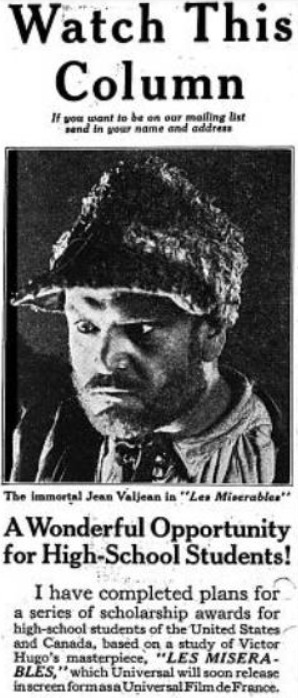
Ad in the Saturday Evening Post. For the US & Canada contest, it was announced that there would be ten $500 scholarships and one $1000 grand prize, for a total of $6,000 in scholarships (that’s over $100,000 today). The number of scholarships available was increased when Jean Sapene, of the Society of Cineromans also made a contribution of $3,000 (The New York Times, 14 Aug 1927.) According to Laemmle, the contest was not “any form of blatant advertising” (source) and yet…it was definitely an advertisement. Though technically entrants didn’t need to see the movie to submit an essay, the contest was great advertising for the movie and additionally, it elevated the profile of the movie by branding it as educational, salutary even, not simply entertaining. In “City of Dreams: The Making and Remaking of Universal Pictures,” Bernard F. Dick writes that Laemmle wanted to be known as “a defender of the values derived from a liberal arts educations” but that “those values did not exist in the abstract; they had to be present in a film Universal was releasing. [In creating the scholarship] Carl was not especially interested in Victor Hugo’s novel Les Miserables but in Henri Fescourt’s 1925 film version that Universal was releasing.” “Much thought and discussion with my associates convinced me that an admirable way to [increase the general appreciation for Victor Hugo’s creative genius] would be through a student’s essay competition,” stated Laemmle. “This would entertain on the part of the entrants something more than a casual reading of the book and impress them with the value of character as exemplified by the life of the novel’s hero" (Niagara Falls Gazette, 18 October 1927.) The scholarships would be awarded by Dr. John J. Tigert, United States Commissioner of Education; Dr. Ernst Crandall, Director of Visual Education of New York City; Dr. Thomas Finnigan, Chairman of Visual Education of the National Education Association; and Octavus Roy Cohen, an author of “ethnic comedies” (and yes that's as bad as it sounds.) The head of the awards committee was Dr. Nicholas Murray Butler, president of Columbia University (Butler would later win the Nobel peace prize but is remembered today for his notable silence in the face of the growing Nazi movement). The letter from Butler accepting the role of judge was published. Here is an excerpt:
My friend, Mr. Will Hays, has sent me your letter to him of November 9th with its kind suggestion that I should act as one of the judges in the interesting and highly useful competition that you propose for high school students. I have written Mr. Hays that it will give me great pleasure to accept your suggestion and to serve your cause to the best of my ability.
If you didn’t catch that, that’s William Hays, who the Hays code is named after.... So while I most strongly associate the 1935 American film version of Les Misérables with the movement to sanitize films and remarket them as educational, we can see that Hays and others were laying the ground work for that with this 1927 release, the scholarship contest, and an advertising campaign that sought to involve educators and students. In cities across the United States, special screenings were held for students and teachers, sometimes at a reduced price, supposedly due to the educational merits of the film (and definitely not in an attempt to sell tickets). Libraries and bookstores handed out hundreds of thousands of bookmarks (designed by the Cleveland Public Library) advertising the film, in addition to entry forms for the contest. In Charleston, South Carolina the high school superintendent wrote an article in the newspaper about the movie. (The Motion Picture News 28 January 1928). In Buffalo, New York school officials endorsed the movie and the superintendent distributed information about the scholarship. (The Motion Picture News 25 November 1927). In Boston the premiere was attended by the Governor, as well as 18 school superintendents (Motion Picture News, 18 November 1927). And in Houston, Texas students in the French and literature classes were given extra credit if they attended the movie (Moving Picture World, 31 December 1927).
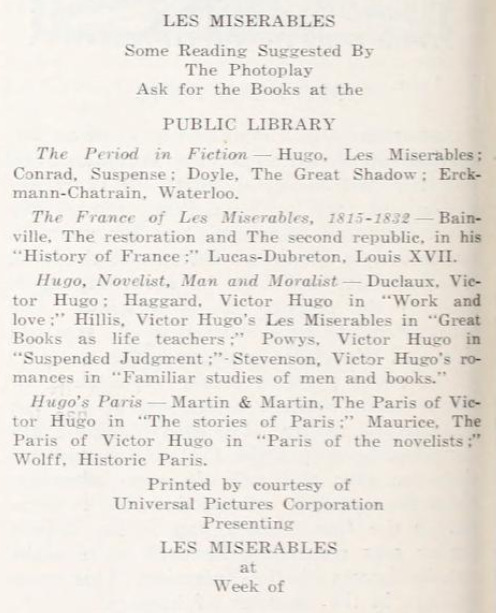
The bookmark in question (Moving Picture World, 24 December 1927.) So who won the contest? One of the $500 prizes was awarded to Alfred Hollander, a student of Emmerich Manual Training high school in Indianapolis, Indiana. He came in 5th place.
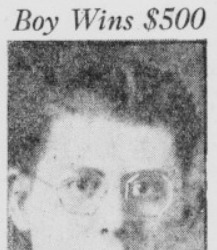
(The Indianapolis Times, 23 April 1929) And the first place winner was 14 year old Edwin M. Snell, a student at Central High School in Grand Rapids, Michigan.
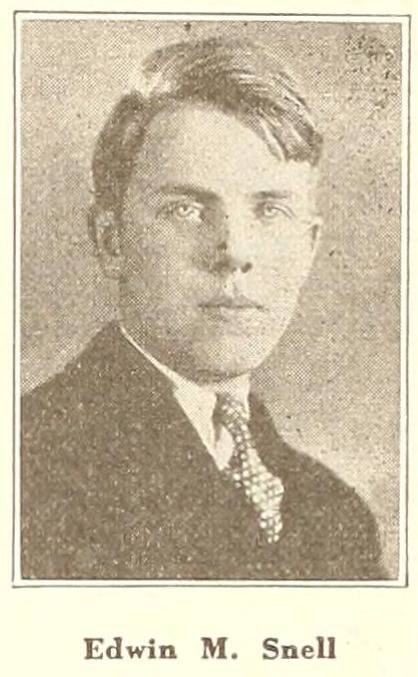
(Exhibitors Herald World, 11 May 1929) But the real winner was Universal Pictures, which surely made buckets of money. And that’s all I have to say on the subject for now, except for to thank @mabeuf5 and @l832 for reigniting my interest in this topic and that I’m sure we will be hearing more about this from the two of you soon.
#les miserables#lm 1925#lm in education#lm in america#sorry this post is so long#all mistakes are mine and mine alone
17 notes
·
View notes
Text
youtube
//Ok but this is so important. I witnessed this happen to a friend of mine in the first Destiny community I was in. We’re no longer a part of it but it was so completely heartbreaking to experience that I’m still recovering from it.
//so please be aware of this kind of stuff. If you see it happening around you, try to take steps to help turn things around. If you see it in your own behavior, try to change it. Try to recognize your own bullying behaviors and choose differently, choose to be better, to be honest, and maybe compassionate instead.
//I don’t know if I’ve put people in the bullied situation, but if I have, I am so sorry.
//I do have some YouTube channels that have been helping me heal from the aforementioned stuff above as well as bad coping mechanisms I’ve been working on kicking. I hope they’ll help you guys too.
https://www.youtube.com/@HealthyGamerGG
https://www.youtube.com/@ManTalks
https://www.youtube.com/@TherapyinaNutshell
https://www.youtube.com/@JimmyonRelationships
https://www.youtube.com/@HowtoADHD
#ooc || out of light#bullying#healing#how to heal#how to help#how to combat indirect aggression#indirect aggression#dealing with indirect aggression#Youtube
5 notes
·
View notes
Text
Oh!!! I forgot to announce this a while back!
I offered my entire catalogue of games to Books Through Bars, specifically the Philadelphia branch after a rep asked me!
I thought that was super cool! If you wanna donate books or support them, look below, and see if there's a branch near you!
13 notes
·
View notes
Text
Baring the Aegis: Philicus' hymn to Demeter
5 notes
·
View notes
Text
Idk if you know this guys but I've seen a few people asking so..
You can watch the new episode here!
7 notes
·
View notes
Text
4 notes
·
View notes
Text
For three years, I have been waiting for good news from Washington to share with Yvette Beatty.
Beatty, 63, is a home health aide in Philadelphia who has provided care for elderly adults and people with disabilities for nearly 40 years. Like most direct care workers, she earns very low wages despite the increasing demand for her essential work.
I first met Beatty in April 2020, just as the COVID-19 pandemic began. In our interviews, she shared with me the hardships she endured: the fear she faced as she risked her life going to work, and her daily struggle to afford basics like food and medicine for her family. “It is very hard.” she told me. “Thank God for noodles.” (You can listen to Beatty in her own words in this profile.)
Beatty questioned why leaders in Washington were not doing more to support underpaid yet essential care workers—the vast majority of whom, like her, are women and workers of color.
“With home health aides, we are struggling out here,” Beatty told me in April 2020. “This is a field everyone needs. They need our service. Why can’t we get wages that help us?”
Yvette Beatty: Listen to her own words in this profile.
Two weeks ago, President Joe Biden took important steps toward heeding Beatty’s call. In a Rose Garden ceremony, he signed a historic executive order with more than 50 directives for improving care jobs and expanding access to affordable child care and long-term care. In his remarks, President Biden thanked care workers like Beatty and said they “deserve jobs with good pay and good benefits.”
The new executive order is important for two key reasons. First, it demonstrates the Biden administration’s commitment to addressing three interrelated and critical challenges in the care sector: 1) the struggle that millions of American families face trying to access high-quality, affordable child care and long-term care for their loved ones; 2) the dire shortage of care workers who provide these services; and 3) the inadequate pay, benefits, and job quality that plague the sector. Because pay for care workers is so low, turnover is high, waitlists are long, and families are unable to find the care they need. In his Rose Garden remarks, President Biden framed the stakes in moral and economic terms, calling the issue “fundamental to who we are as a nation” and important to the entire economy.
To this end, the executive order directs the Department of Health and Human Services (HHS) and the Department of Education to use their regulatory power to enhance the job quality and wages for long-term care workers, early educators, and child care workers. For instance, HHS could increase the pay and benefits for Head Start personnel, and the Education Department could encourage its grantees to increase wages for child care staff.
The second key reason for the executive order’s importance is that it harnesses the power of the executive branch at a time when progress in Congress has stalled. Early in his administration, President Biden proposed historic investments in the care sector as part of the Build Back Better agenda, including $400 billion for long-term care, $225 billion for child care, and $200 billion for early childhood education. However, the final version of this legislation signed into law (the Inflation Reduction Act) was ultimately a slimmed down version of Build Back Better that was stripped of any investments in care.
Now, with Republicans in control of the House of Representatives, any major legislation investing in care work seems unlikely for the foreseeable future. But by issuing an executive order on care work, President Biden was able to bypass Congress to make some progress through the executive branch and demonstrate continued support—albeit without bringing any new money to the issue.
Unfortunately, that lack of new money means that America’s care crisis will continue, despite the positive steps outlined in the executive order. Sizable federal and state investment is required to simultaneously improve care jobs and expand access to affordable, quality child care and long-term care. Unlike other low-wage sectors such as retail or fast food (where wages are responsive to labor market demand, as evidenced by fast-growing wages for in-demand leisure and hospitality workers), the hourly pay for workers providing direct long-term care is mainly financed through Medicaid (funded by both the federal and state governments) and restricted by (often inadequate) Medicaid reimbursement rates set by states. Even when demand for workers is high, as it is today, employers in the care sector have little room to raise pay or improve benefits to attract and retain staff, unless states increase Medicaid reimbursement rates and Congress and state governments invest additional money to finance pay bumps.
Recently, several states have made financial commitments to raise pay for care workers permanently. Colorado, Michigan, North Carolina, and New York have funded pay increases for direct care workers providing long-term services, including home health aides. And New Mexico, Washington, D.C., Maine, and Louisiana boosted pay for child care workers. While promising, these examples of state leadership remain the exception. A comprehensive and national solution to the care crisis requires federal action.
To Yvette Beatty, this issue isn’t partisan. “It isn’t a Democrat or a Republican thing,” she told me back in 2020. “It’s a ‘we’ thing.” She noted the appeal to voters in helping both families and workers. “Help the home health aides so we can continue to help our patients. If we can’t keep ourselves together, how are we going to keep our patients together?”
President Biden’s executive order and instances of state action show hopeful signs of progress on solving America’s care crisis. But major federal investment is needed, and I’m still waiting to call Beatty with good news that it’s coming. Three years ago, when I asked her how she would feel if leaders in Washington invested in care workers, she responded: “It would give us hope if they supported us. It would let us know we are appreciated. If the government could help us right now, it would feel beautiful.”
5 notes
·
View notes
Text

Independence Hall Taken June 06, 2024 Philadelphia, PA https://flic.kr/p/2qfTHpd
#usa#philad#history#independencehall#nationalpark#architecture#architecturephotographer#architecturaldetail#symmetry#fujixseries#fujix#fujixt5#fujifilm#Photographers on Tumblr#Original Photographers
8 notes
·
View notes
Text
Pipe Fitting: Exploring Career Opportunities After Pipe Fitting Classes
There are several benefits when researching a career in pipefitting. The need and demand for this profession are incredibly high. Not only does it pay a substantial salary, but the need will always stay strong as people and businesses need experts to fix their pipefitting systems.

0 notes
Text
#youtube#sports#podcast#sportsunfolded#nba basketball#nba#boston celtics#denver nuggets#memphis grizzlies#philadelphia 76ers#brooklyn nets#basketball#rankings
2 notes
·
View notes
Photo
.......
.............
..innnnn west philad–
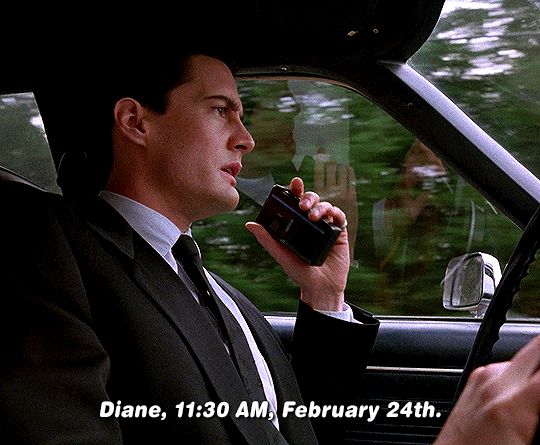
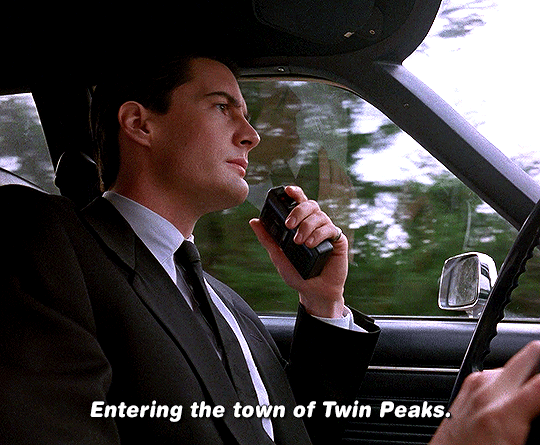
It’s five miles south of the Canadian border, twelve miles west of the state line. I’ve never seen so many trees in my life. As W.C. Fields would say, “I’d rather be here than Philadelphia.”
TWIN PEAKS: Pilot (1990) dir. David Lynch
20K notes
·
View notes